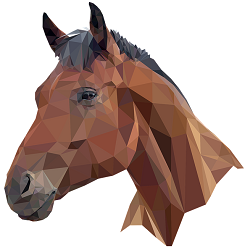
You’ve taken your first lesson with a qualified instructor, and you’re on track to learning this incredible and timeless (there’s that word again) sport. This is one of those significant life lessons that will stay with you throughout your years, but before the memories start, they have to start somewhere — at the beginning.
Whether you’re just getting acquainted with horses or consider yourself a seasoned pro — taking safety seriously should always be the top-of-mind adventure rule. Follow these tips.
Wear a Riding Hat
Indeed, many riders don’t wear hats. However, it is highly recommended for your safety. If you fall off your horse and hit your head, this could cause serious injury or even death if the hat doesn’t protect you from impact with the ground or other objects.
Additionally, if your hair gets caught in the horse’s reins during an emergency stop or runs around, it could seriously injure or kill you. Riding hats come in many different styles, but all have certain features in common:
- A brim that extends out beyond your nose and eyes – this prevents debris from getting into your eyes
- A chin strap to keep the hat securely in place on windy days
- Sturdy construction – riding hats made from flimsy materials will not offer adequate protection during a fall or collision with an object
Wear Appropriate Clothing
The most important thing to remember when taking a horseback riding lesson is to wear appropriate clothing. This means wearing long pants, boots, a hat, and gloves.
You should also wear sunscreen, bug spray, and sunscreen when riding outdoors. You need all the extra gear because horses can be unpredictable animals. Also, they may startle at something on the trail, or someone might accidentally bump into them, causing them to move suddenly. If you are not wearing protective gear, it could cause serious injury or even death.
Know Your Horse
Before you go out on a trail ride with your instructor, ensure that you know everything about your horse’s behavior and personality. That way, you can avoid any accidents or injuries during your ride.
For example, if the horse has a habit of spooking at things along the trail, then ensure that you know what causes him to do so so that you can avoid those things when riding through open areas. Also, ensure that if there is anything specific that your horse doesn’t like, such as being touched on certain parts of his body (like behind his ears), then make sure you avoid that.
Practice Balance Before Mounting the Horse
Practice balance before moving forward when you get on a horse for the first time. Otherwise, you could fall off before you even get started!
Hold the reins lightly and let them dangle from your fingers. Hold on with both hands but don’t pull on them too tightly. If the horse moves forward, just let him go and keep holding onto the reins (if he stops moving forward, pull gently on one side of his mouth).
Once he settles down, move your feet into position so that they’re directly behind his front legs (the stirrups should be even with each other) and hold onto his mane with one hand so that you’re leaning slightly forward over his withers (top of his high point). Don’t lean too far forward or too far back because this will make it harder for him to walk straight ahead or stop quickly if he wants to change direction.
Always Use Correct Signals To Guide Your Horse
The most important thing to remember when riding is that horses are prey animals. They run away from danger to survive, so they’re naturally afraid of it. For this reason, they can be spooked easily by loud noises or sudden movements.
If you want to guide your horse in the right direction during a ride, you need to use the correct signals, so he knows what you want him to do. For example, if you want him to turn left or right, bring your reins up over his neck and pull them toward that side; this will show him which way he should go.
Always use the signals that your instructor showed you when making these motions — don’t improvise because this can confuse the horse and make him panic even more!
Be Careful While Running at High Speed
While riding your horse on the road, ensure that no vehicles come from the opposite direction. It is better to avoid crossing roads where there is heavy traffic or where there are no proper footpaths or pavements.
Crossing the road using signals or pedestrian crossings is always better than jaywalking across the road. Ensure no traffic signal is on the other side of the street before crossing it with your horse.
Also, ensure that there are no pedestrians or other obstacles near your path. It will make it difficult to control your horse and yourself during an emergency when riding on open roads without visibility because of density.
Be Aware of Other People While Riding
When you’re on your horse, you should be aware of what’s going on around you. You need to know if someone is coming up behind you or if there’s a pothole in the path ahead of you.
Ensure you don’t take your eyes off the trail for too long. If you’re riding with friends and they pass by, look over your shoulder at least once every minute or so just to ensure everything is okay behind you.

Be Safe When Riding!
So, remember these seven safety measures next time you take your horse riding lesson or the first time you find yourself in a barn. Every little bit helps keep you and your horse safe.
